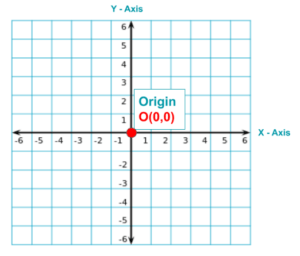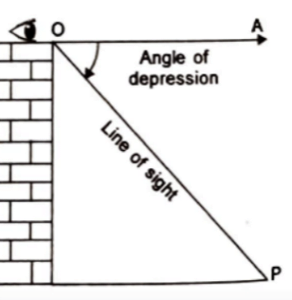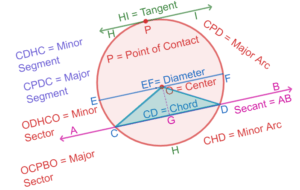CBSE 6-10 | Math & Science | Study Premium
Please login to access file manager.
Pre-Requisires
Test & Enrich
Integers | Speed Notes
Notes For Quick Recap
Whole Numbers The numbers 1,2, 3, ……which we use for counting are known as natural numbers. If you add 1 to a natural number, we get its successor. If you subtract 1 from a natural number, you get its predecessor. (Scroll down to continue …)
Study Tools
Audio, Visual & Digital Content
Integers
Definition
Integers are the set of whole numbers that include positive numbers, negative numbers, and zero. The set of integers can be represented as: Integers={…,−3,−2,−1,0,1,2,3,…}Integers={…,−3,−2,−1,0,1,2,3,…}
Key Properties of Integers
- Closure Properties:
- Addition: The sum of any two integers is an integer.
- Examples:
- 2+3=52+3=5
- −1+4=3−1+4=3
- −2+(−3)=−5−2+(−3)=−5
- Examples:
- Subtraction: The difference between any two integers is an integer.
- Examples:
- 5−3=25−3=2
- −2−1=−3−2−1=−3
- 0−(−4)=40−(−4)=4
- Examples:
- Multiplication: The product of any two integers is an integer.
- Examples:
- 3×2=63×2=6
- −4×5=−20−4×5=−20
- −3×−2=6−3×−2=6
- Examples:
- Addition: The sum of any two integers is an integer.
- Identity Elements:
- Additive Identity: The integer 0 is the identity element for addition.
- Examples:
- 7+0=77+0=7
- −5+0=−5−5+0=−5
- 0+0=00+0=0
- Examples:
- Multiplicative Identity: The integer 1 is the identity element for multiplication.
- Examples:
- 4×1=44×1=4
- −3×1=−3−3×1=−3
- 0×1=00×1=0
- Examples:
- Additive Identity: The integer 0 is the identity element for addition.
- Inverse Elements:
- Additive Inverse: For every integer a, there exists an integer −a such that a+(−a)=a+−a=0.
- Examples:
- The additive inverse of 5 is -5: 5+(−5)=5+−5=0
- The additive inverse of -3 is 3: −3+3=0
- The additive inverse of 0 is 0: 0+0=0
- Examples:
- Multiplicative Inverse: Integers do not have multiplicative inverses within the set of integers (except for 1 and -1).
- Additive Inverse: For every integer a, there exists an integer −a such that a+(−a)=a+−a=0.
- Commutative and Associative Properties:
- Commutative Property:
- Addition: a+b = b+a
- Examples:
- 2+3=3+2
- −1+4 = 4+(−1) = 4-1 = 3
- 0+5 = 5+0 = 5
- Examples:
- Multiplication: a×b=b×a
- Examples:
- 3×4 = 4×3 = 12
- −2×1 = 1×−2 = -2
- 0×5 = 5×0 = 0
- Examples:
- Addition: a+b = b+a
- Associative Property:
- Addition: (a+b)+c = a+(b+c) = (a+c)+b
- Examples:
- (1+2)+3 = 1+(2+3) = (1+3)+2
- [0+(−4)]+2 = 0+[−4+2] = [(0+2)+(-4)]
- [-2+(−3)]+(-1) = -2+[−3+(-1)] = [-2+(−1)]+(-3)
- Examples:
- Multiplication: (a×b)×c=a×(b×c)(a×c)×b
- Examples:
- (2×3)×4 = 2×(3×4) = (2×4)×3
- (0×−1)×5 = 0×(−1×5) = (0×5)×−1
- (−2×3)×−1 = −2×(3×−1) = (−2×-1)×3
- Examples:
- Addition: (a+b)+c = a+(b+c) = (a+c)+b
- Commutative Property:
- Distributive Property:
- Multiplication distributes over addition:
- Example: a×(b+c)=(a×b)+(a×c) Or a×(b+c)=a×b+a×c
- Examples:
- 2×(3+4) = (2×3)+(2×4) = 6+12 = 14 Or (2×7) = 14
- −3×(1+2) = (−3×1)+(−3×2) = -3-6 = -9 Or −3×3 = −9
- 0×(5+7) = (0×5)+(0×7) = 0×(5+7) = 0×5+0×7 = 0+0 =0
- Examples:
- Example: a×(b+c)=(a×b)+(a×c) Or a×(b+c)=a×b+a×c
- Multiplication distributes over addition:
Ordering of Integers
- Integers can be ordered on a number line, where:
- Negative integers are to the left of 0.
- Positive integers are to the right of 0.
- Examples of ordering:
- …−3<−2<−1<0<1<2<3−3<−2<−1<0<1<2<3…
- −5,−2,0,4,3−5,−2,0,4,3 arranged in order: −5<−2<0<3<4−5<−2<0<3<4
Absolute Value
- The absolute value of an integer is its distance from zero on the number line, regardless of direction.
- Notation: ∣a∣∣a∣
- Examples:
- ∣3∣=3∣3∣=3
- ∣−3∣=3∣−3∣=3
- ∣0∣=0∣0∣=0
Conclusion
Understanding integers and their properties is fundamental in mathematics. They play a critical role in various areas, including algebra, number theory, and real-world applications. Mastery of integer operations is essential for higher-level mathematics.
Dig Deep
Topic Level Resources
Sub – Topics
Select A Topic
Topic:
Chapters Index
Select Another Chapter
[display-posts category=”CBSE 6 – Mathematics – Study – Premium” posts_per_page=”25″]
Assessments
Personalised Assessments








